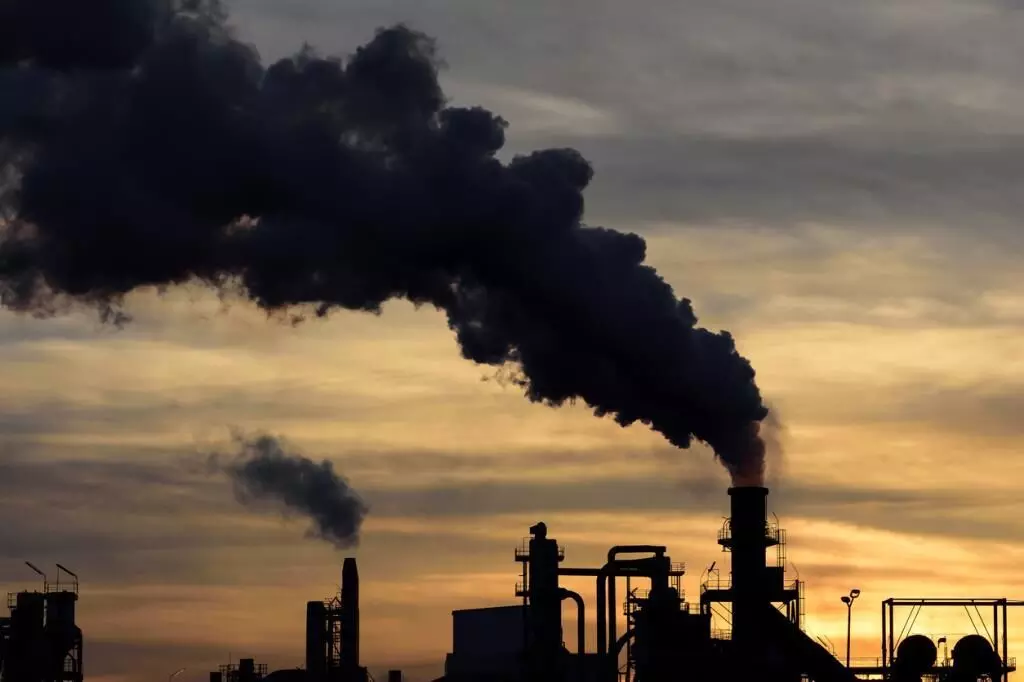2023 broke every single climate indicator: WMO
The report, titled "State of the Global Climate 2023", confirmed that 2023 was the warmest year in the 174-year observational record
By Newsmeter Network
New Delhi: Greenhouse gas levels, surface temperatures, ocean heat and acidification, and sea level rise all reached record highs in 2023, according to a new report by the World Meteorological Organization (WMO) released on Tuesday.
The report, titled "State of the Global Climate 2023", confirmed that 2023 was the warmest year in the 174-year observational record, with the global average near-surface temperature at 1.45 degrees Celsius above the pre-industrial baseline (1850-1900).
"Sirens are blaring across all major indicators... Some records are not just chart-topping, they are chart-busting. And changes are speeding up," said United Nations Secretary-General Antonio Guterres.
"Never have we been so close – albeit on a temporary basis at the moment – to the 1.5 degrees Celsius lower limit of the Paris Agreement on climate change. The WMO community is sounding the red alert to the world... The climate crisis is the defining challenge that humanity faces," WMO Secretary-General Celeste Saulo said.
"Climate change is about much more than temperatures. What we witnessed in 2023, especially with the unprecedented ocean warmth, glacier retreat, and Antarctic Sea ice loss, is cause for particular concern," she added.
COP28 President Sultan Al Jaber said the world has no time to spare.
To limit warming to 1.5 degrees Celsius, countries must deliver enhanced Nationally Determined Contributions (NDCs), economy-wide emissions reductions, and investments in nature and adaptation, he stressed.
Concentrations of the three main greenhouse gases – carbon dioxide, methane, and nitrous oxide – reached record-high observed levels, the report said.
At 417.9 parts per million (ppm), the global average concentration of carbon dioxide in 2022 was 50 per cent higher than in the pre-industrial era, trapping heat in the atmosphere.
Real-time data showed the CO2 concentration continued to rise in 2023 while the global mean sea level reached a record high.
The rate of sea level rise in the last 10 years (2014–2023) has more than doubled since the first decade of the satellite record (1993 – 2002), the WMO said.
Antarctic sea-ice extent reached an absolute record low in February. The annual maximum extent was around 1 million square kilometres below the previous record low maximum.
The global set of reference glaciers for the hydrological year 2022-2023 experienced the largest loss of ice on record (1950-2023), driven by an extremely negative mass balance in both western North America and Europe, the WMO noted.
Extreme weather and climate events had major socio-economic impacts on all inhabited continents, including major floods, tropical cyclones, extreme heat and drought, and associated wildfires, it said.
The WMO report also cited figures showing that the number of people who are acutely food insecure worldwide has more than doubled, from 149 million people before the COVID-19 pandemic to 333 million people in 2023 (in 78 monitored countries by the World Food Programme).
WFP Global hunger levels remained unchanged from 2021 to 2022.
However, these are still far above pre-COVID-19 pandemic levels: In 2022, 9.2 per cent of the global population (735.1 million people) were undernourished.
Protracted conflicts, economic downturns, and high food prices, further exacerbated by high costs of agricultural inputs driven by ongoing and widespread conflict around the world, are at the root of high global food insecurity levels, aggravated by the effects of climate and weather extremes.
Inputs from PTI